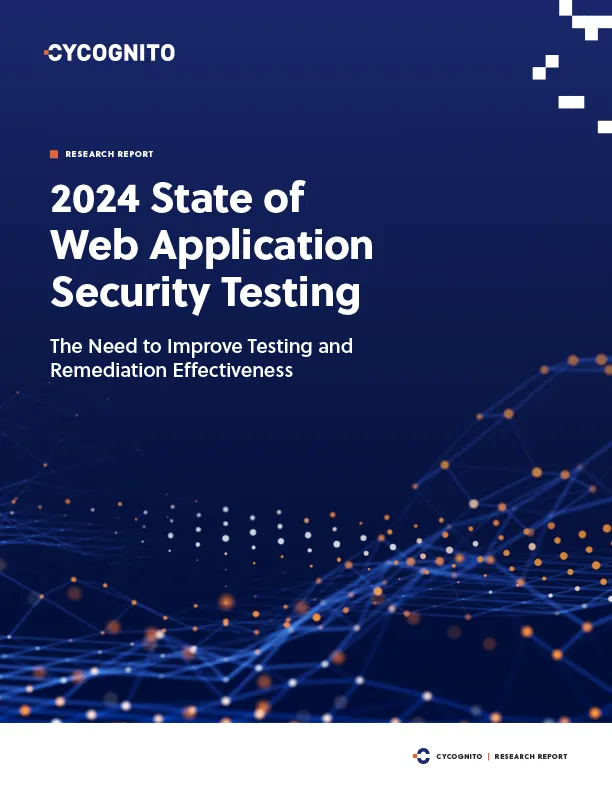



REST API security refers to the measures and protocols implemented to protect RESTful APIs from unauthorized access, data breaches, and other cybersecurity threats. It covers a range of practices designed to ensure that data exchanged between clients and servers is secure, that only authorized users can access the API, and that potential vulnerabilities are mitigated.
Key aspects of REST API security include authentication, which verifies user identity; authorization, which determines what resources a user can access; encryption, which protects data in transit and at rest; and logging and monitoring to detect suspicious activities. These elements work together to create a security framework for RESTful APIs.
Without proper security measures, APIs can become entry points for cyberattacks, leading to unauthorized access, data breaches, and service disruptions. Given that REST APIs often handle critical operations and sensitive information, ensuring their security is essential to prevent malicious activities.
Effective REST API security also helps organizations comply with regulatory requirements and industry standards. Many sectors mandate stringent security protocols to protect user data and maintain privacy. By implementing comprehensive security measures for REST APIs, organizations can avoid legal repercussions and build trust with their users.
Here are some of the key security principles to consider when designing RESTful APIs.
The least privilege principle mandates that users and systems should only have the minimum access necessary to perform their functions. This reduces the risk of unauthorized access and limits the potential damage from security breaches. By restricting permissions, organizations can minimize their attack surface. This aligns with the zero trust security framework, which ensures that all access attempts from within or outside an organization should be continuously verified.
Implementing this principle involves carefully designing roles and permissions within the API architecture. Each user or service should be granted only the privileges required for their specific tasks. Regular audits and reviews of access rights help ensure compliance.
Explicit permissions require that users are granted access to resources only after explicit approval. This ensures that no user can access sensitive data without proper authorization. Implementing explicit permissions involves defining specific roles and assigning access rights based on these roles, limiting exposure to critical information.
By default, systems should deny access to all resources unless explicitly permitted. This fail-safe policy reduces the risk of unauthorized data exposure and enhances overall security. Regularly reviewing and updating permissions helps maintain a secure environment by adapting to changing roles and requirements within the organization.
An access validation mechanism ensures that only authorized users can reach specific resources within a REST API. This involves checking user credentials and permissions against predefined rules before granting access. It prevents unauthorized actions by validating requests in real time, reducing reliance on cached permissions that may be outdated or compromised.
Implementing access validation involves integrating authentication and authorization checks at every endpoint. Using token-based systems like OAuth2 or JWT, the API can validate each request’s authenticity and permissions, ensuring secure and appropriate data access throughout the system.
Segregating data privileges involves designing access controls based on the sensitivity of the data and the roles of users. This ensures that users only have access to the information necessary for their specific tasks, minimizing the risk of unauthorized data exposure.
Implementing role-based access control (RBAC) is a common method, where permissions are assigned according to job functions. Additionally, enforcing data segregation helps in containing potential breaches. If an attacker compromises a user account, they can only access a limited subset of data based on that account’s privileges.

Rob Gurzeev, CEO and Co-Founder of CyCognito, has led the development of offensive security solutions for both the private sector and intelligence agencies.
In my experience, here are tips that can help you better secure REST APIs:

Discover how your web app security compares. Learn about average testing frequency, the prevalence of web application security incidents and breaches, and the increasing adoption of automation to improve testing efficiency.
Here are some best practices to ensure the security of REST APIs.
HTTPS, which stands for Hypertext Transfer Protocol Secure, encrypts data transmitted between the client and server using SSL/TLS protocols. This encryption protects sensitive information from interception and tampering during transit.
To implement HTTPS, obtain an SSL certificate and configure the server to use it. This ensures that all API requests and responses are encrypted, providing a secure communication channel.
HTTPS also authenticates the server’s identity, preventing man-in-the-middle attacks. The SSL/TLS protocol checks that the server is who it claims to be, ensuring that clients are communicating with the correct endpoint.
Authentication and authorization are fundamental to securing REST APIs. Authentication verifies the identity of users accessing the API, ensuring they are who they claim to be. This can be achieved through various methods, such as API keys, username and password combinations, or more advanced techniques like multi-factor authentication (MFA).
Authorization determines what resources authenticated users are allowed to access and what actions they can perform. Implementing role-based access control (RBAC) is a common approach, where permissions are assigned based on user roles. This ensures users only have access to the data and functionalities necessary for their job functions.
OAuth is a widely adopted protocol for single sign-on (SSO), allowing users to authenticate once and gain access to multiple systems without re-entering credentials. This approach streamlines the user experience and enhances security by reducing the number of times credentials are transmitted over the network.
To implement OAuth for SSO, configure your API to accept tokens from a trusted OAuth provider. These tokens validate the user's identity across different services, ensuring secure and seamless access. Regularly review and update OAuth configurations to align with current security standards and address emerging threats.
Sanitizing input parameters is crucial to prevent injection attacks, such as SQL injection or cross-site scripting (XSS). Input validation ensures that data received from users is clean, safe, and conforms to expected formats.
Implement input validation by using allowlists, rejecting any data that does not meet predefined criteria. Additionally, employ libraries or frameworks that offer built-in sanitization functions. Regularly update these tools to handle new types of threats and vulnerabilities, thereby maintaining robust security against injection attacks.
For data in transit, using Transport Layer Security (TLS) encrypts the data exchanged between clients and servers, preventing eavesdropping and tampering. TLS ensures that any data sent over the network cannot be read or altered by attackers.
For data at rest, encryption protects stored information from unauthorized access, even if physical security measures fail. Implementing strong encryption algorithms like AES-256 ensures that stored data remains secure. Additionally, it’s important to manage encryption keys securely using tools like hardware security modules (HSMs) or cloud-based key management services.
API gateways act as intermediaries between clients and backend services, enhancing REST API security by enforcing policies, managing traffic, and providing additional layers of protection. They centralize authentication and authorization processes, ensuring that only verified requests reach the API endpoints.
API gateways typically offer advanced features like rate limiting and throttling to prevent abuse such as DDoS attacks. By controlling the number of requests a client can make within a specified timeframe, they protect backend services from being overwhelmed. Gateways also provide logging and monitoring capabilities to detect suspicious activities.
When an error occurs, APIs should return generic messages that do not expose internal implementation details. Detailed error information can be logged internally but must not be shared with the end user to prevent attackers from gaining insights into potential vulnerabilities.
Logging is equally important for monitoring and auditing purposes. Logs should capture all relevant events, including failed authentication attempts, access violations, and data modifications. Proper logging helps in detecting suspicious activities and investigating security incidents. Tools like ELK Stack or Splunk can be used to manage logs while ensuring they do not contain sensitive data.
Threat modeling involves systematically analyzing the API’s components, interactions, and data flows to uncover vulnerabilities that attackers could exploit. By understanding the attack surface and potential threat vectors, organizations can prioritize and implement appropriate security measures.
The threat modeling process typically begins with defining the scope of the system, including identifying all assets, entry points, and user roles. Next, assess potential threats using frameworks like STRIDE (Spoofing, Tampering, Repudiation, Information Disclosure, Denial of Service, Elevation of Privilege) or DREAD (Damage potential, Reproducibility, Exploitability, Affected users, Discoverability).
Once threats are identified and rated based on their severity and likelihood of occurrence, implement mitigation strategies such as enhancing authentication mechanisms or enforcing stricter input validation.
Security audits involve systematically reviewing the API’s infrastructure, policies, and codebase to ensure compliance with security standards. They help identify potential vulnerabilities and areas that need improvement. Regularly scheduled audits ensure that security measures remain effective over time and adapt to new threats.
Penetration testing complements security audits by simulating real-world cyberattacks on an API. This proactive approach helps uncover vulnerabilities that may not be evident through standard auditing processes. By integrating automated tools and manual tests performed by skilled penetration testers, organizations can better understand their API’s security posture.
Software vulnerabilities are frequently discovered, and attackers often exploit these weaknesses to gain unauthorized access or disrupt services. By regularly updating APIs and applying patches promptly, organizations can mitigate these risks and protect their systems from known threats.
Keeping the software stack up-to-date involves monitoring for new releases of the libraries, frameworks, and tools being used. Implement automated systems where possible to apply patches quickly. Regularly scheduled maintenance windows can help ensure updates are applied consistently without disrupting service availability.
CyCognito is an exposure management platform that reduces risk by discovering, testing and prioritizing security issues. The platform scans billions of websites, cloud applications and APIs and uses advanced AI to identify the most critical risks and guide remediation.
Emerging companies, government agencies and Fortune 500 organizations rely on CyCognito to secure and protect from growing threats.

Discover how your web app security compares. Learn about average testing frequency, the prevalence of web application security incidents and breaches, and the increasing adoption of automation to improve testing efficiency.